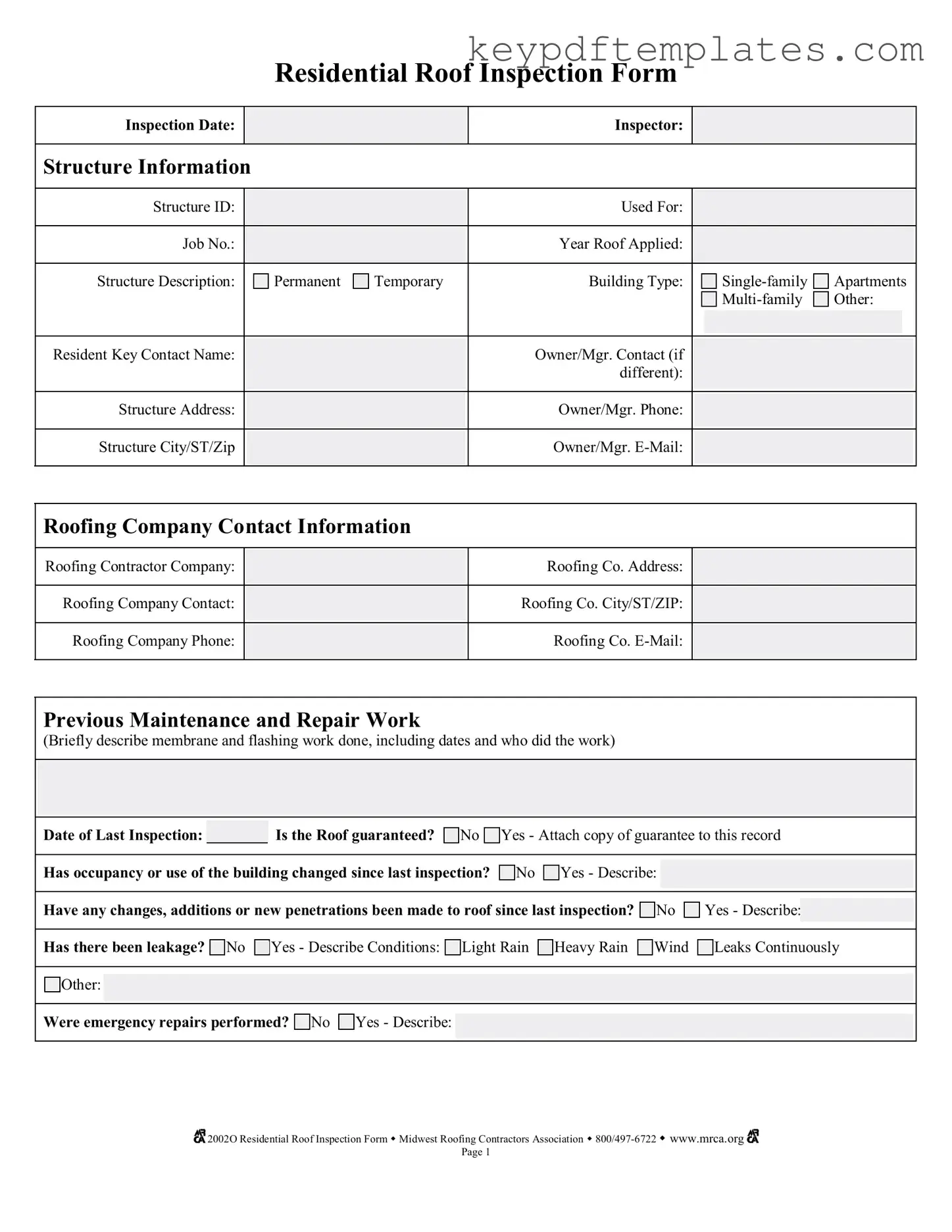Get Roof Inspection Form
The Residential Roof Inspection Form is a critical document used to assess the condition and integrity of a building's roof. It captures essential details such as inspection dates, structure information, and any previous maintenance or repairs. By systematically evaluating various aspects of the roof, this form helps ensure that any issues are identified and addressed promptly, contributing to the overall safety and longevity of the structure.
Modify Document Online
